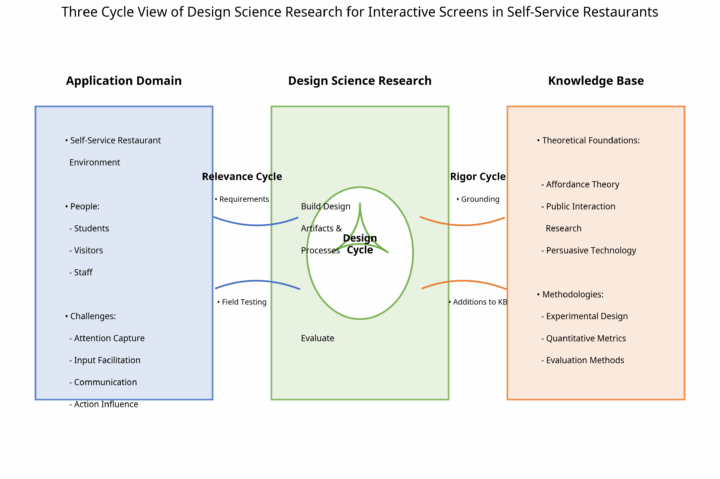An Affordance-Based Design Model for Interactive Screens in Self-Service Restaurants
Interactive screens are increasingly prevalent in self-service environments, yet designing them to effectively guide user actions remains a complex challenge. Our research addresses this by presenting an Affordance-Based Design Model for interactive screens in self-service restaurants (SSRs). The motivation behind this model stems from the need to overcome issues such as user cognitive overload and difficulties in capturing attention across diverse user populations, ultimately aiming to facilitate user-driven actions within these settings.
This model systematically integrates four key components: Visual Affordances, Perceived Affordances, Contextual Affordances, and Interaction Affordances. Visual affordances refer to the directly observable properties of an object that suggest its use, such as a button’s appearance indicating it can be pressed. Perceived affordances involve a user’s interpretation of an object’s potential uses, influenced by their past experiences and knowledge. Contextual affordances consider the environmental factors and the specific situation in which the interactive screen is used, which can alter how affordances are perceived. Finally, interaction affordances relate to the dynamic properties that emerge during user interaction, guiding subsequent actions. By systematically considering these four dimensions, designers can create interactive screens that are not only intuitive but also highly effective in prompting desired user engagement. This structured approach provides a model for measuring and optimizing affordances, bridging theoretical concepts with practical design guidelines for improved user experience in SSRs.
The implications of this model extend beyond the design phase. It offers a systematic approach for designers and engineers to create more effective interactive displays, ensuring that user interfaces are intuitively designed to trigger specific user actions. For SSRs, this translates into enhanced operational efficiency, improved customer satisfaction, and the potential to influence behaviors such as capturing intent to revisit the restaurant, reducing food waste or encouraging specific dining times. The model’s validation through experiments demonstrates its utility in real-world applications, providing a tool for developing more impactful and user-centric digital experiences in public interactive settings.
This model is published as part of the thesis from Muhammad Ismail Khursheed available at: https://urn.fi/URN:NBN:fi-fe2025062473262

